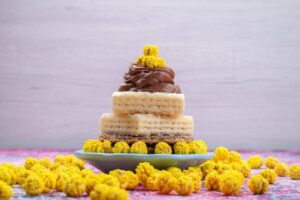The Food Blog
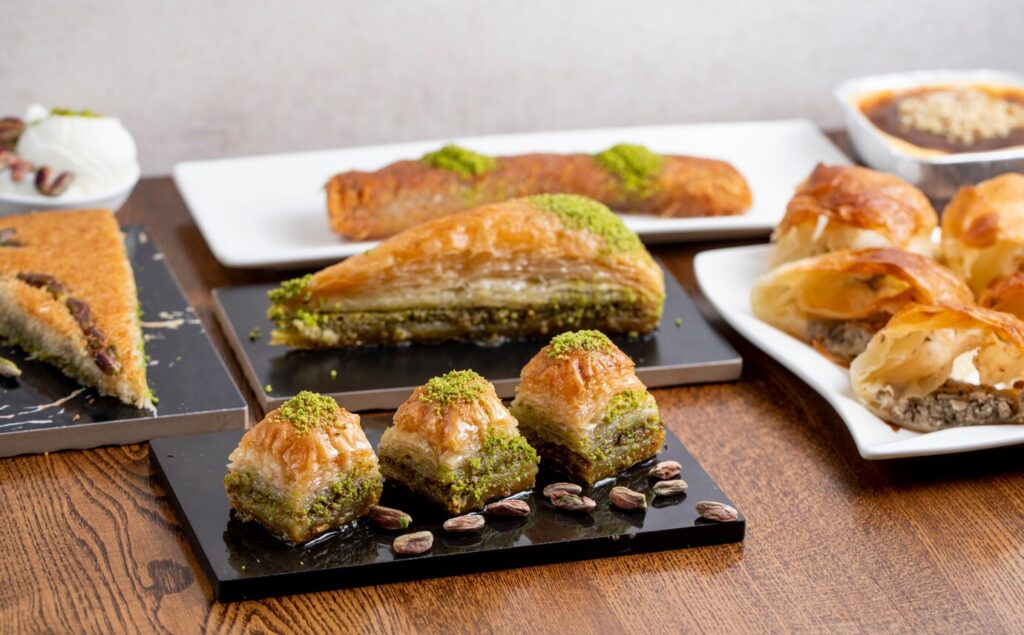
How to Make Traditional Pastries from Different Countries
Pastries are beloved around the world for their flaky, buttery layers and indulgent fillings. Whether they are enjoyed with a morning coffee or as a sweet treat after dinner, pastries reflect the diverse culinary heritage of their countries of origin. From the delicate croissants of France to the sweet, nutty baklava of the Middle East, each pastry tells a story of tradition, technique, and flavour.
In this guide, you’ll learn how to make traditional pastries from different countries, exploring their history, ingredients, and step-by-step recipes. Whether you’re a baking enthusiast or simply want to expand your culinary skills, these global pastries will transport you to the kitchens of faraway lands.
France: Flaky and Buttery Croissants
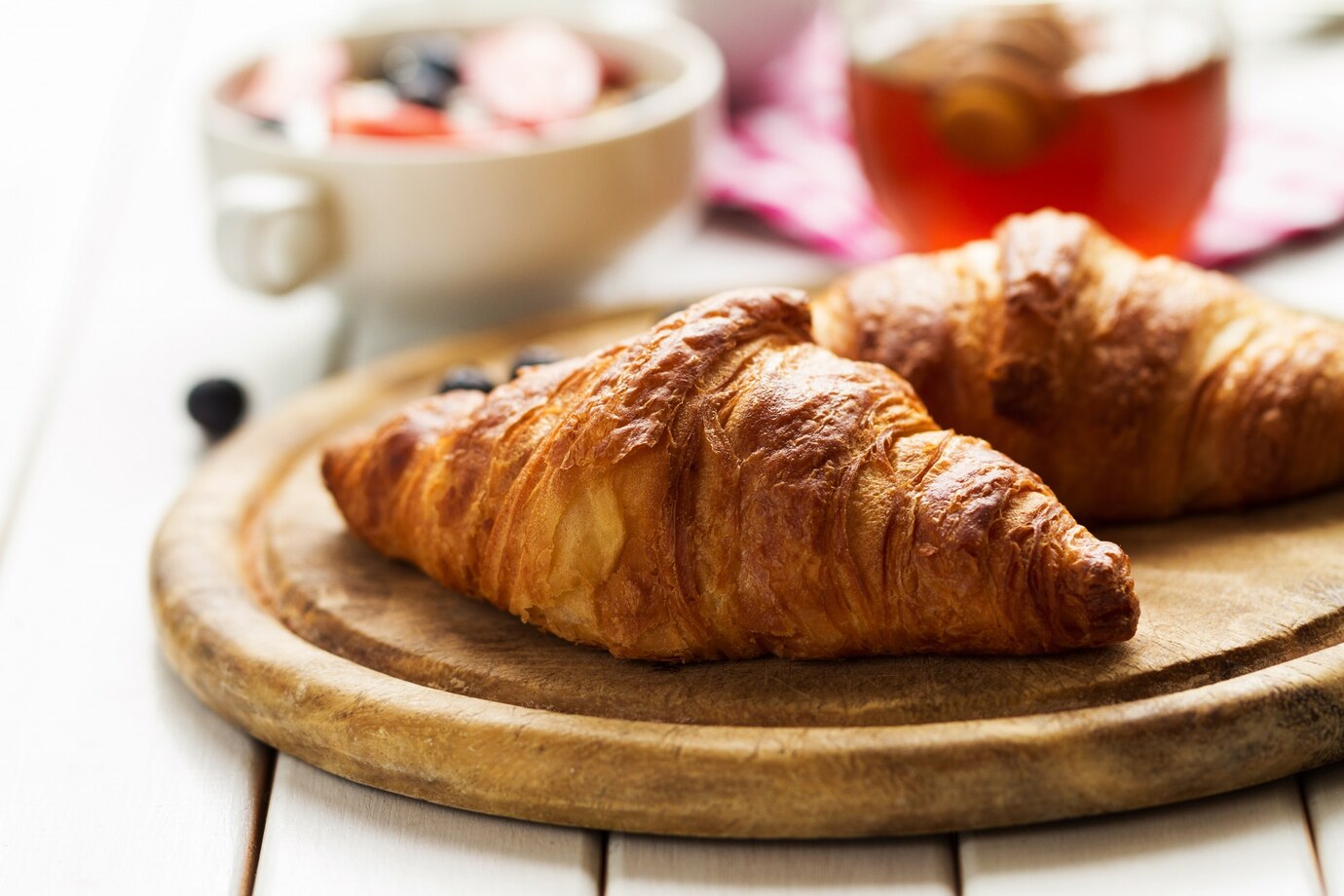
The Origin of Croissants
The croissant, with its light, flaky layers, is a staple of French patisserie. Despite its association with France, it actually has Austrian origins, inspired by the kipper, a crescent-shaped pastry. The French perfected the recipe, creating the laminated dough that defines today’s croissant.
Ingredients:
- 500g all-purpose flour
- 10g salt
- 50g sugar
- 10g instant yeast
- 300ml warm milk
- 250g unsalted butter (for laminating)
- 1 egg (for egg wash)
Instructions:
- Prepare the dough:
- In a bowl, combine flour, salt, sugar, and yeast.
- Gradually add warm milk and knead until a smooth dough forms.
- Let it rest in the fridge for 2 hours.
- Laminate the dough:
- Roll out the dough into a rectangle.
- Place the cold butter block in the centre and fold the dough over it.
- Roll out and fold again, repeating 3 times to create layers.
- Chill between folds for 30 minutes.
- Shape the croissants:
- Roll the dough into a large rectangle and cut triangles.
- Roll each triangle from base to tip, forming a crescent shape.
- Bake:
- Brush with egg wash and bake at 200°C (390°F) for 18-20 minutes until golden brown.
Serving suggestion: Enjoy with jam, butter, or alongside coffee.
Greece and Turkey: Rich and Nutty Baklava
The History of Baklava
Baklava is a sweet pastry made of layers of phyllo dough, filled with nuts, and soaked in honey or syrup. It originated in the Ottoman Empire, and variations of the dessert have been claimed by Greek and Turkish influences.
Ingredients:
- 500g phyllo dough
- 300g walnuts or pistachios (finely chopped)
- 150g unsalted butter (melted)
- 200g sugar
- 250ml water
- 100ml honey
- 1 tsp cinnamon
- 1 tsp lemon juice
Instructions:
- Prepare the filling:
- Mix chopped nuts with cinnamon in a bowl.
- Assemble the layers:
- Butter a baking dish and layer 5 sheets of phyllo, brushing each with butter.
- Sprinkle with a thin layer of nut mixture.
- Repeat the process, layering phyllo and nuts until you run out.
- Finish with 5 layers of phyllo on top.
- Bake:
- Pre-cut into diamond shapes and bake at 180°C (350°F) for 40-45 minutes until golden.
- Make the syrup:
- In a saucepan, combine sugar, water, honey, and lemon juice.
- Simmer for 10 minutes.
- Combine:
- Pour the syrup over the hot baklava and let it soak for several hours.
Serving suggestion: Enjoy with Turkish coffee or Greek mountain tea.
Italy: Creamy and Crisp Cannoli
The History of Cannoli
Cannoli are crispy pastry tubes filled with sweet ricotta cream originating from Sicily. Traditionally made during Carnevale, they have become a symbol of Italian dessert culture.
Ingredients:
For the shells:
- 250g all-purpose flour
- 30g sugar
- 30g butter (softened)
- 1 egg yolk
- 60ml white wine
- Vegetable oil (for frying)
For the filling:
- 400g ricotta cheese
- 100g icing sugar
- 1 tsp vanilla extract
- 50g dark chocolate chips
- 50g candied orange peel (optional)
Instructions:
- Make the dough:
- Mix flour, sugar, butter, egg yolk, and white wine until a dough forms.
- Knead and chill for 30 minutes.
- Shape and fry the shells:
- Roll the dough thinly and cut into 10cm circles.
- Wrap around metal cannoli tubes.
- Fry in hot oil until golden brown.
- Prepare the filling:
- Whip ricotta, icing sugar, and vanilla until smooth.
- Fold in chocolate chips and orange peel.
- Fill and serve:
- Pipe the ricotta mixture into the cooled shells.
- Dust with icing sugar.
Serving suggestion: Enjoy with espresso or a sweet dessert wine.
Argentina: Sweet and Flaky Pastelitos
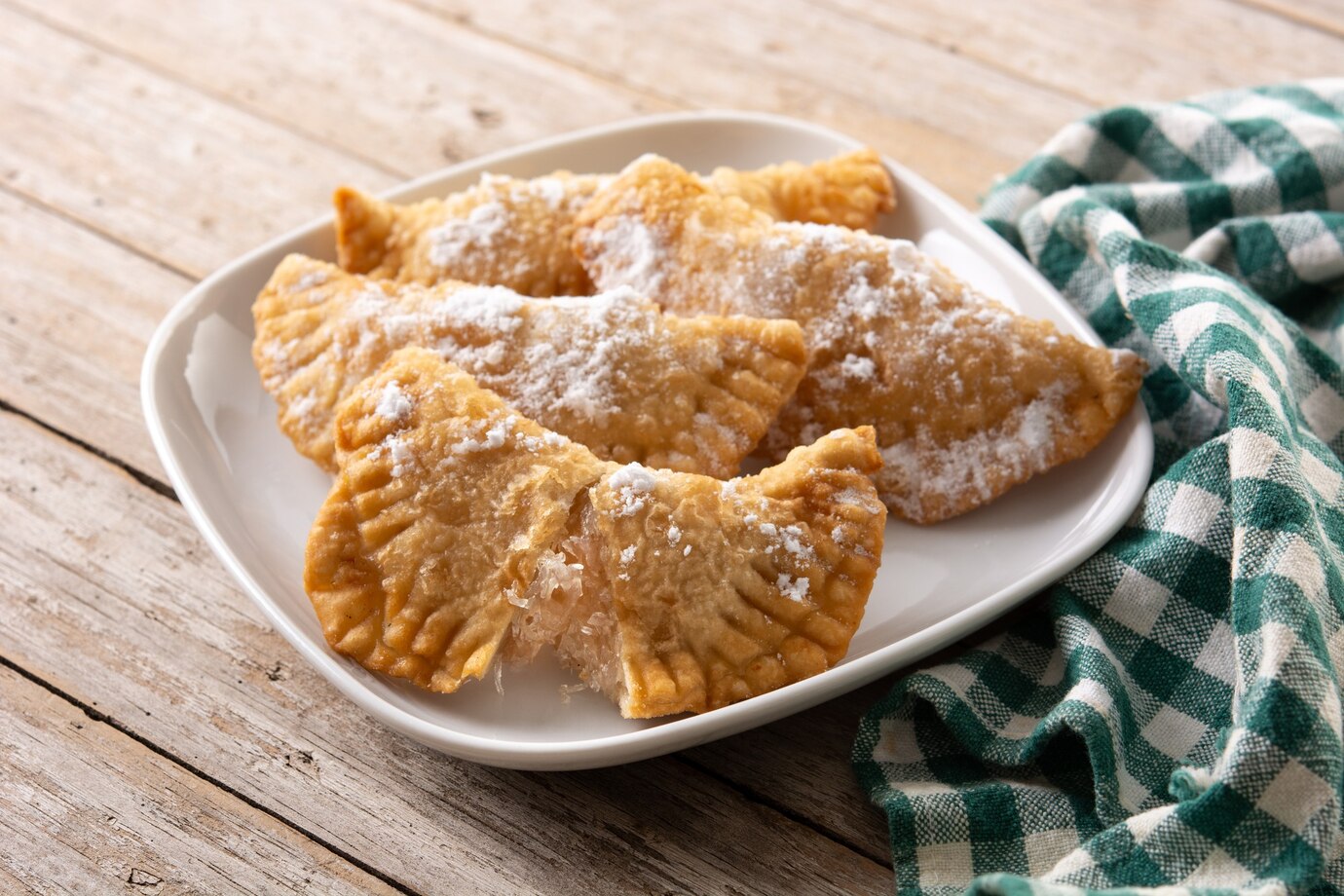
The History of Pastelitos
Pastelitos are Argentinian pastries made with layers of dough, filled with dulce de membrillo (quince paste) or dulce de leche, and fried until golden. They are traditionally eaten on Argentina’s Independence Day (May 25th).
Ingredients:
- 250g all-purpose flour
- 50g butter (melted)
- 1 egg yolk
- 100ml warm water
- 200g quince paste or dulce de leche
- Vegetable oil (for frying)
- Icing sugar (for dusting)
Instructions:
- Make the dough:
- Mix flour, butter, egg yolk, and water until a dough forms.
- Knead and let it rest for 30 minutes.
- Shape the pastries:
- Roll the dough thin and cut into small squares.
- Place a spoonful of filling in the centre of half the squares.
- Cover with another square and press the edges together.
- Fry the pastelitos:
- Heat oil and fry until golden brown and puffed.
- Serve:
- Dust with icing sugar.
Serving suggestion: Enjoy with a mate or hot chocolate.
Portugal: Custardy and Crisp Pastéis de Nata
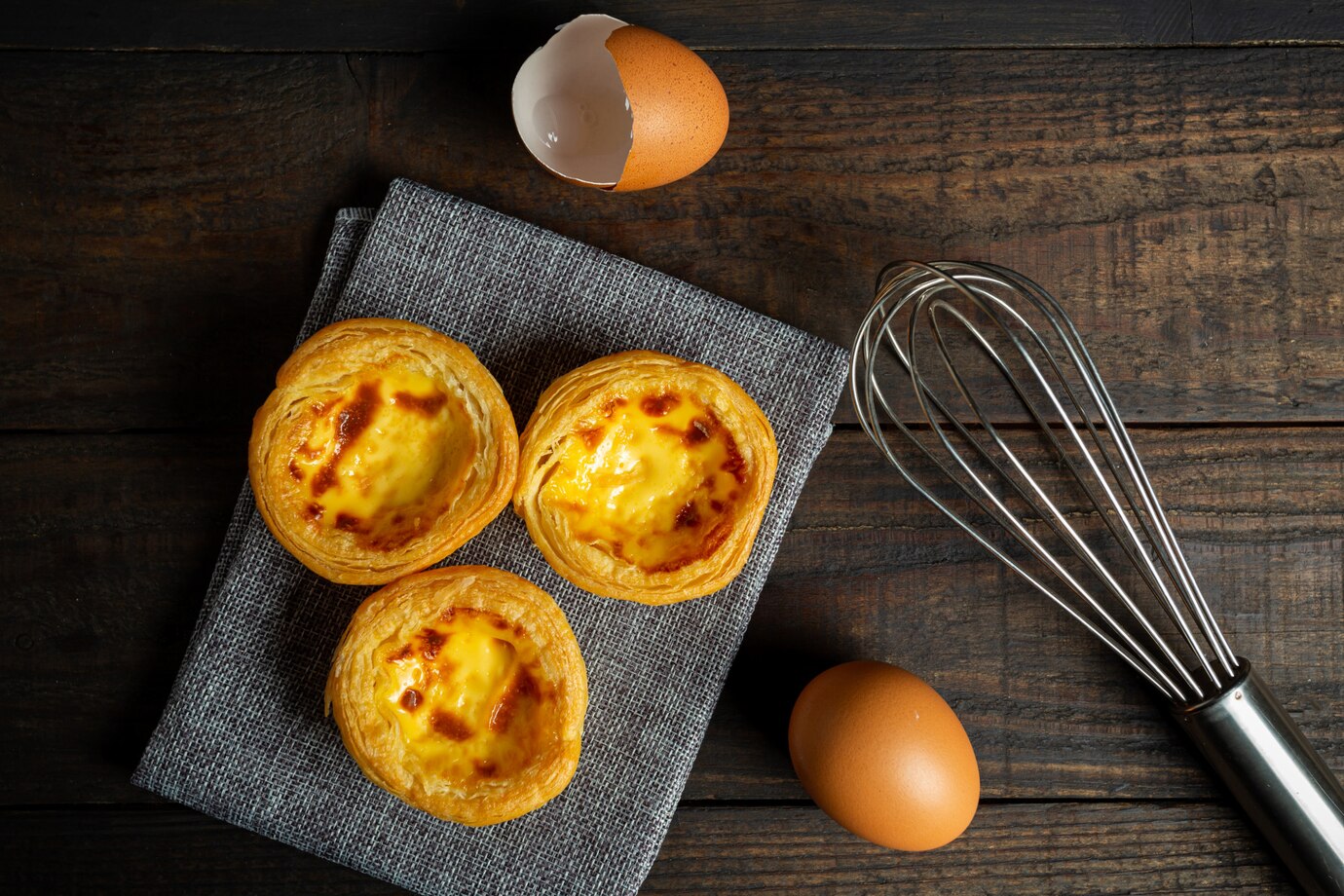
The History of Pastéis de Nata
These Portuguese custard tarts have a flaky pastry shell and a rich, creamy filling. They were first created by Catholic monks in Lisbon during the 18th century.
Ingredients:
- 250g puff pastry
- 300ml whole milk
- 100g sugar
- 4 egg yolks
- 2 tbsp flour
- 1 tsp vanilla extract
- 1 cinnamon stick
- Lemon zest
Instructions:
- Prepare the custard:
- Heat milk, sugar, cinnamon, and lemon zest.
- Whisk yolks and flour in a bowl.
- Slowly add hot milk to the egg mixture, stirring continuously.
- Simmer until thick.
- Assemble the tarts:
- Cut pastry into small circles and press into a muffin tin.
- Fill with custard.
- Bake:
- Bake at 220°C (425°F) for 15-20 minutes until the top is golden.
Serving suggestion: Enjoy with espresso or port wine.
Conclusion: A Sweet Journey Through Global Pastries
From the flaky croissants of France to the crispy cannoli of Italy and the sticky-sweet baklava of the Middle East, these traditional pastries offer a taste of global heritage.
Try your hand at these authentic recipes and impress your guests with homemade global pastries that celebrate rich cultural traditions.
Whether you’re perfecting a buttery dough or mastering a sweet syrup, these pastries will bring the world into your kitchen. Try these ice creams as well.






